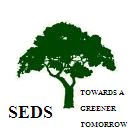On the 10th of November 2011, the Low Carbon Farming (LCF) coalition came together once again for a meeting in Bagepalli. In April 2010 five participant NGO’s had taken a giant leap and planned out a strategy for a yearlong Pilot Project around LCF. The idea was to generate carbon revenues from Sustainable Agriculture (SA) practices for poor people.
The NGOs have been delineating discrete plots through GPS readings and GIS mapping where SA is adopted. Baseline emissions from current (mainstream) agriculture were researched and estimations for future emission reductions, through SA practices, were made. Diaries were handed out to the farmers and regular meetings and trainings were held in the villages to make sure farmers were adopting SA practices and understanding the new dimension of LCF. At the same time the five NGO’s have improved their knowledge on LCF.
LCF encourages farmers to adopt SA practices that reduce, minimize and remove the use of synthetic fertilizers because they generate green house gases. Their benefit in this will be the extra income they make by generating real emission reductions. This is done through, anaerobic composting, using organic fertilizers, mulching, intercropping, multi-cropping, water management in paddy and a horde of techniques specially designed for particular regions, populations and climatic zones. At the meeting every NGO talked about their LCF practices. All through the Pilot Phase the NGO’s SA practices and technical skills have been raised by the new requirements set by LCF. Now is the time to think forward about the Implementation Phase.
During the meeting the importance of the diary was discussed. We came to a conclusion that daily monitoring is very important. The diary is the basic document for each farmer. Each farmer has to use his diary on time. Every time the farmer undertakes an activity in his field, be it weeding, fertilizing or some other, he/she has to write it down in the diary. Many farmers have already practiced SA technologies in the Pilot Phase. Now is the time to collect all the correct information of each village. The following questions are very important: where (village), who (farmer), where (again) (plot), what (crop), how much. It is also very important to survey all the farmers, not only the LCF farmers. This creates a control group.
 |
| Paddy field |
Another topic on the meeting was about the future vision: SA or organic farming. Organic farming can be seen as the pinnacle of SA. With SA the chemical fertilizer has to be reduced and organic input increased in order to bring a balance in the in- and outputs of the farmer. In organic farming the usage of chemical fertilizers and pesticides is completely abandoned. But there are a lot of difficulties and limitations in organic farming during the whole process. As for now we have to move towards organic farming, step-by-step but focus on LCF first.
During the Pilot Phase every NGO has built ‘trust’ with the farmers. This ‘trust’ has to be maintained and more LCF practices have to be implemented. This is one phase. The next phase is to present the emissions reductions from the LCF practices as scientifically validated ‘offer sheets’ to potential buyers of carbon credits. Ram proved this very clearly: what can’t be measured can’t be managed. Next to ‘trust’ we also need ‘proof’. The next three years the actual project implementation will be taken up. Small and marginal farmers will receive an incentive through carbon revenues to adopt Sustainable Agriculture practices. During this project implementation phase, the 5 participant NGOs will continue delineating the discrete plots of small, marginal and other drought affected farmers and improving their SA skills.
 |
| Discussion with a farmer group |
